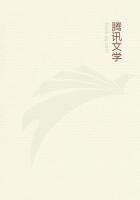1WE have now discussed the physical characteristics of animals and their methods of generation. Their habits and their modes of living vary according to their character and their food.
In the great majority of animals there are traces of psychical qualities or attitudes, which qualities are more markedly differentiated in the case of human beings. For just as we pointed out resemblances in the physical organs, so in a number of animals we observe gentleness or fierceness, mildness or cross temper, courage, or timidity, fear or confidence, high spirit or low cunning, and, with regard to intelligence, something equivalent to sagacity. Some of these qualities in man, as compared with the corresponding qualities in animals, differ only quantitatively: that is to say, a man has more or less of this quality, and an animal has more or less of some other;other qualities in man are represented by analogous and not identical qualities: for instance, just as in man we find knowledge, wisdom, and sagacity, so in certain animals there exists some other natural potentiality akin to these. The truth of this statement will be the more clearly apprehended if we have regard to the phenomena of childhood: for in children may be observed the traces and seeds of what will one day be settled psychological habits, though psychologically a child hardly differs for the time being from an animal; so that one is quite justified in saying that, as regards man and animals, certain psychical qualities are identical with one another, whilst others resemble, and others are analogous to, each other.
Nature proceeds little by little from things lifeless to animal life in such a way that it is impossible to determine the exact line of demarcation, nor on which side thereof an intermediate form should lie. Thus, next after lifeless things in the upward scale comes the plant, and of plants one will differ from another as to its amount of apparent vitality; and, in a word, the whole genus of plants, whilst it is devoid of life as compared with an animal, is endowed with life as compared with other corporeal entities. Indeed, as we just remarked, there is observed in plants a continuous scale of ascent towards the animal. So, in the sea, there are certain objects concerning which one would be at a loss to determine whether they be animal or vegetable. For instance, certain of these objects are fairly rooted, and in several cases perish if detached; thus the pinna is rooted to a particular spot, and the solen (or razor-shell) cannot survive withdrawal from its burrow. Indeed, broadly speaking, the entire genus of testaceans have a resemblance to vegetables, if they be contrasted with such animals as are capable of progression.
In regard to sensibility, some animals give no indication whatsoever of it, whilst others indicate it but indistinctly. Further, the substance of some of these intermediate creatures is fleshlike, as is the case with the so-called tethya (or ascidians) and the acalephae (or sea-anemones); but the sponge is in every respect like a vegetable. And so throughout the entire animal scale there is a graduated differentiation in amount of vitality and in capacity for motion.
A similar statement holds good with regard to habits of life.
Thus of plants that spring from seed the one function seems to be the reproduction of their own particular species, and the sphere of action with certain animals is similarly limited. The faculty of reproduction, then, is common to all alike. If sensibility be superadded, then their lives will differ from one another in respect to sexual intercourse through the varying amount of pleasure derived therefrom, and also in regard to modes of parturition and ways of rearing their young. Some animals, like plants, simply procreate their own species at definite seasons; other animals busy themselves also in procuring food for their young, and after they are reared quit them and have no further dealings with them; other animals are more intelligent and endowed with memory, and they live with their offspring for a longer period and on a more social footing.
The life of animals, then, may be divided into two acts-procreation and feeding; for on these two acts all their interests and life concentrate. Their food depends chiefly on the substance of which they are severally constituted; for the source of their growth in all cases will be this substance. And whatsoever is in conformity with nature is pleasant, and all animals pursue pleasure in keeping with their nature.
2Animals are also differentiated locally: that is to say, some live upon dry land, while others live in the water. And this differentiation may be interpreted in two different ways. Thus, some animals are termed terrestrial as inhaling air, and others aquatic as taking in water; and there are others which do not actually take in these elements, but nevertheless are constitutionally adapted to the cooling influence, so far as is needful to them, of one element or the other, and hence are called terrestrial or aquatic though they neither breathe air nor take in water. Again, other animals are so called from their finding their food and fixing their habitat on land or in water:
for many animals, although they inhale air and breed on land, yet derive their food from the water, and live in water for the greater part of their lives; and these are the only animals to which as living in and on two elements the term 'amphibious' is applicable. There is no animal taking in water that is terrestrial or aerial or that derives its food from the land, whereas of the great number of land animals inhaling air many get their food from the water; moreover some are so peculiarly organized that if they be shut off altogether from the water they cannot possibly live, as for instance, the so-called sea-turtle, the crocodile, the hippopotamus, the seal, and some of the smaller creatures, such as the fresh-water tortoise and the frog:















